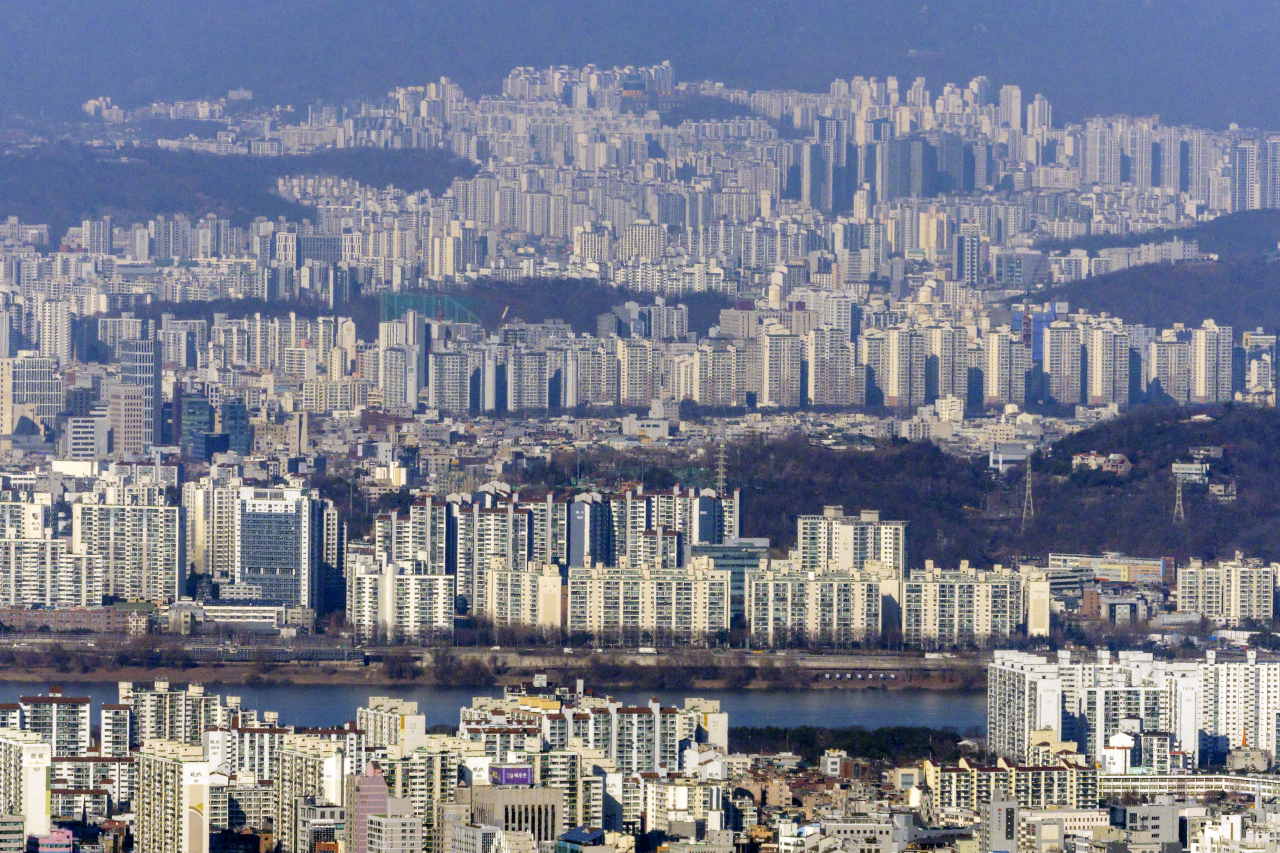Over half of population resides in Seoul metropolitan area: data
Seoul population declines, Incheon, Gyeonggi grow
By Lee Jung-jooPublished : Feb. 14, 2024 - 16:22

More than half of South Korea’s total population was found to reside in the capital city of Seoul and surrounding metropolitan cities, according to official data released by the government on Wednesday.
As of December 2023, the registered populations in Seoul, Incheon and Gyeonggi Province recorded up to 26.1 million residents, which made up 50.7 percent of the country's total population. Out of the 26.1 million, 9.39 million were registered in Seoul, 3 million were registered in Incheon and 13.63 million were registered in Gyeonggi Province.
The total population was found to be decreasing in Seoul while increasing in Gyeonggi Province and Incheon. In 2019, Seoul’s population reached up to 9.73 million, which then decreased to 9.43 million in 2022. In 2019, Incheon and Gyeonggi Province’s population was recorded at 2.96 million and 12.24 million, then increased to 2.97 million and 13.60 million, respectively, in 2022.
In terms of the working population, the metropolitan area accounted for 14.48 million workers as of December 2023 or 51.6 percent of the total population. Out of the 14.48 million, 5.19 million workers were from Seoul, 1.65 million were from Incheon and 7.65 million were from Gyeonggi Province.
Besides the population numbers, most businesses and total export numbers were also concentrated in the metropolitan area when data was last collected in 2022.
As of 2022, 3.01 million businesses, or 49.1 percent of the total number of businesses, were based in the metropolitan area -- 1.18 million businesses were based in Seoul, 320,000 were based in Incheon and 1.51 million were based in Gyeonggi Province. Of these businesses, 55.9 percent, or 52,725 had their headquarters based in Seoul and other metropolitan areas.
In terms of export numbers in 2022, out of Korea’s total exports of $683.6 billion, Seoul and other metropolitan areas accounted for 72.3 percent. Seoul accounted for 33.2 percent with $226.9 billion, Incheon accounted for 8.0 percent with $55 billion and Gyeonggi Province accounted for 31.1 percent with $212.4 billion.
Between metropolitan and non-metropolitan areas, the wealth gap between the two households was also large. As of March 2023, the average household wealth in metropolitan areas reached 659.8 million won ($493,000) while non-metropolitan areas’ average household wealth added up to 394.7 million won.
According to professor Ma Kang-rae from Chungang University’s Department of Urban Planning and Real Estate, Korea’s total population numbers are heavily concentrated in metropolitan areas as most businesses and higher education platforms are based in the area. This leads to problems such as “high housing costs, population outflow and fewer opportunities for non-metropolitan areas to develop.”
"For Korea’s sustainable development, a balanced regional development must be considered by the central government, by strengthening non-metropolitan regions’ foundation for innovative growth and maximizing regional characteristics that are unique to that region," professor Ma told The Korea Herald.




















